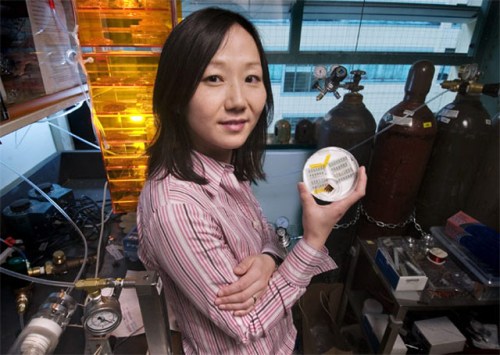San Francisco (CNS) -- The research group led by Dr. Bao Zhenan, associate professor at Stanford University, added new features - transparency and stretchability - to team's super electronic skin, following earlier invention of skin-like sensors with high sensibility and electricity-generation capacity.
The research was published by Nature Nanotechnology on October 23.
The artificial skin, made of highly-sensitive plastic films, can sense a butterfly's footsteps. The invention can be used in prosthesis, robots, mobile phones, touch screens, steering wheels and medical practices.
Dr. Bao told CNS that her group managed to produce spring-like structures in the nanotubes that accommodate strains and at the same demonstrates ideal conductivities, which allows it to imitate human skins of various colors.
Dr. Bao said her long-term goal is to make electronic skins that have all the characteristics of human skins. To achieve the goal, sensors that can detect temperature and humidity are still needed, she added.
Born in Nanjing, capital city of east China's Jiangsu Province, Dr. Bao migrated to the U.S. before she finished her study at Nanjing University. She received her Ph.D. in chemistry from the University of Chicago in 1995 and joined the Materials Research Department of Bell Labs, after which she joined the faculty of the Stanford Chemical Engineering Department.
Renowned as the most distinguished female chemistry scientist in the States, Her research papers have been published by scientific journals, such as Science and Nature.



















